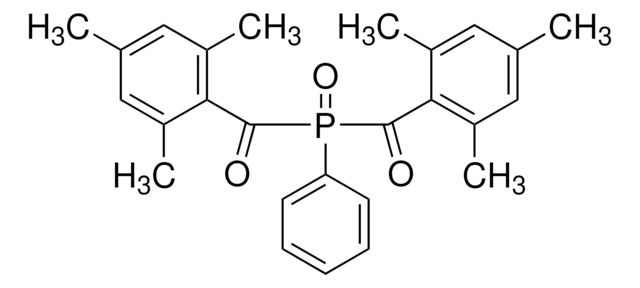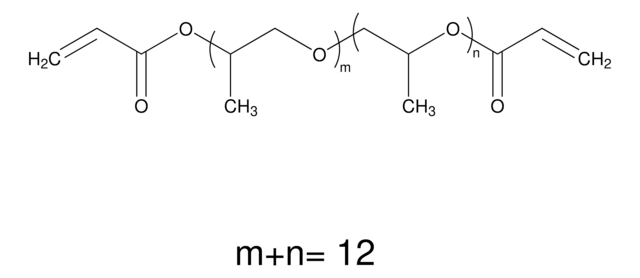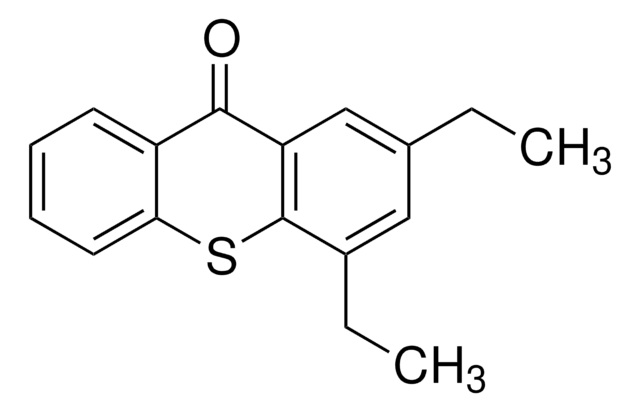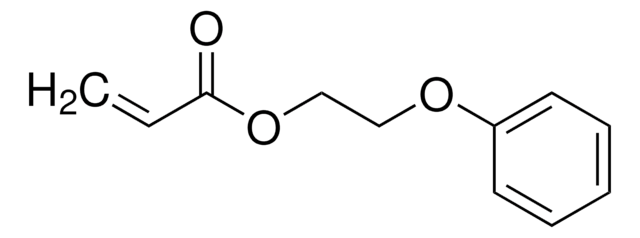246832
Tri(propylene glycol) diacrylate, mixture of isomers
contains MEHQ and HQ as inhibitors, technical grade
Synonym(s):
TRPGDA
About This Item
Recommended Products
grade
technical grade
Quality Level
vapor density
>1 (vs air)
vapor pressure
<0.01 mmHg ( 20 °C)
form
liquid
contains
150-220 ppm monomethyl ether hydroquinone and hydroquinone (total inhibitor)
refractive index
n20/D 1.45 (lit.)
density
1.03 g/mL at 25 °C (lit.)
SMILES string
CC(COC(C)COC(=O)C=C)OCC(C)OC(=O)C=C
InChI
1S/C15H24O6/c1-6-14(16)20-12(4)9-18-8-11(3)19-10-13(5)21-15(17)7-2/h6-7,11-13H,1-2,8-10H2,3-5H3
InChI key
ZDQNWDNMNKSMHI-UHFFFAOYSA-N
Signal Word
Warning
Hazard Statements
Precautionary Statements
Hazard Classifications
Aquatic Chronic 2 - Eye Irrit. 2 - Skin Irrit. 2 - Skin Sens. 1 - STOT SE 3
Target Organs
Respiratory system
Storage Class Code
10 - Combustible liquids
WGK
WGK 2
Flash Point(F)
307.4 °F - closed cup
Flash Point(C)
153 °C - closed cup
Personal Protective Equipment
Choose from one of the most recent versions:
Already Own This Product?
Find documentation for the products that you have recently purchased in the Document Library.
Customers Also Viewed
Our team of scientists has experience in all areas of research including Life Science, Material Science, Chemical Synthesis, Chromatography, Analytical and many others.
Contact Technical Service














